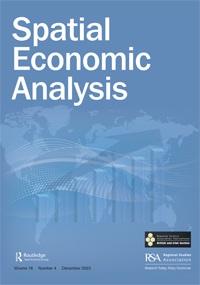SPATIAL ECONOMIC ANALYSIS
Number:
3
Published:
Classification JEL:
J61

The most recent
Juliana Jaramillo-Echeverri, Adriana Sofía Rodríguez
Gaurav Khanna, Carlos Alberto Medina-Durango, Anant Nyshadham, Daniel Ramos-Menchelli, Jorge Andrés Tamayo-Castaño, Audrey Tiew
Cesar Anzola-Bravo, Poveda-Olarte Paola
One explanation for the increasing number of hectares of coca is that eradication strategies displace coca crops but fail to completely clear affected areas. In the drug policy literature, that dynamic shifting is commonly known as the balloon effect. This study integrates georeferenced agricultural data through spatially explicit econometric models to test the hypothesis that forced eradication displaces coca crops. Using annual data for 1116 contiguous municipalities in Colombia, we estimate a spatial Durbin error model. Our results suggest that, on average, aerial fumigation in a municipality diffuses the benefits of this crime control strategy to neighbouring municipalities.

